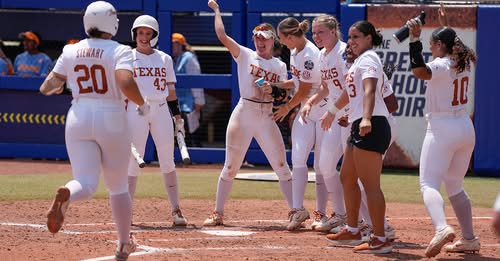In the world of college basketball, there are moments that will forever live in the memories of fans, players, and analysts alike—games that are remembered not just for the final score, but for the dramatic, unpredictable, and sometimes downright chaotic nature of the contest. Last night’s Texas Tech game was undoubtedly one of those moments, delivering an extraordinary spectacle marked by a shocking blunder that has since ignited a firestorm of controversy and debate. The sheer unpredictability of what unfolded in the final minutes transformed what should have been a routine finish into one of the wildest endings ever witnessed on a college basketball court.
Texas Tech entered the game with high expectations and a strong performance that had fans buzzing. The Red Raiders had shown great promise throughout the season, and this matchup was expected to be another solid outing showcasing their resilience and tactical prowess. Yet, what happened in the dying moments of the contest would overshadow any other storyline, as a sequence of errors, miscommunications, and split-second decisions culminated in a play that has been dissected endlessly since the buzzer sounded.
The game itself was tightly contested from the opening tip. Both teams traded baskets, defensive stops, and momentum swings that kept the crowd on edge. As the clock wound down to the final minute, the atmosphere in the arena was electric, the tension palpable. Fans held their breath, fully aware that the next few plays would decide the outcome of this thrilling battle. The teams were neck and neck, each possession gaining monumental importance.
With just seconds remaining, Texas Tech found themselves in possession of the ball, positioned to take the lead or at the very least force overtime. The players and coaching staff had drilled countless scenarios in practice, but nothing could have prepared them for the sequence that was about to unfold. What appeared to be a routine inbound pass quickly spiraled into chaos. A miscommunication between teammates led to an errant throw that sailed out of bounds, an unforced error that stunned the crowd and sent shockwaves through the team’s bench.
But that was only the beginning. The confusion didn’t end there. As the opposing team scrambled to regain control, the referees found themselves at the center of a heated dispute over a critical call. Was there a timeout granted? Did the clock stop in time? Questions flooded social media and sports talk shows as analysts pored over every frame of the replay, attempting to decode what had truly transpired. The officials’ decision to allow play to continue, despite apparent protests from Texas Tech, added fuel to the fire, creating a rift between fans who believed the Red Raiders had been wronged and those who felt the referees made the right call.
The controversy deepened when the opposing team capitalized on the confusion, scoring a buzzer-beating basket that sealed the victory. The jubilant celebration from the victors clashed sharply with the stunned silence and outrage from Texas Tech supporters, who saw the game’s conclusion as a miscarriage of justice. Social media erupted with fans sharing clips, debating referee decisions, and lamenting what they described as one of the most inexplicable and frustrating endings in recent memory.
For the players, the blunder was devastating. What had been a chance to secure a critical win slipped away in an instant. Postgame interviews revealed the emotional toll, with several players expressing disbelief and frustration. Coaches emphasized the need to move forward and learn from the experience, but the sting of the loss lingered heavily. The blunder was replayed endlessly on highlight reels, becoming an unfortunate emblem of a night that had promised so much but delivered heartbreak instead.
The sports community at large weighed in, with experts offering differing perspectives on the key moments that defined the finish. Some praised the opposing team’s composure and opportunism, recognizing the value of capitalizing on mistakes in high-pressure situations. Others questioned the officiating, suggesting that better management of the final seconds could have altered the outcome. Debate raged over the rules governing timeouts, out-of-bounds calls, and the clock’s management in critical moments, sparking conversations about potential changes to avoid similar controversies in the future.
Beyond the immediate drama, the incident raised broader questions about the psychological impact such moments have on athletes. The pressure to perform under intense scrutiny, the mental resilience required to bounce back from costly mistakes, and the role of leadership in navigating adversity were all themes explored in the aftermath. Sports psychologists and coaches highlighted how experiences like this, while painful, can serve as important growth opportunities for young players learning to handle the highs and lows of competitive sports.
Texas Tech’s fanbase was vocal and passionate in their reaction. From local sports bars to national forums, discussions were heated and often emotional. Many called for the NCAA and conference officials to review the game footage and the referees’ conduct, hoping for some form of clarification or acknowledgment of errors. Some fans organized watch parties to analyze the play frame by frame, illustrating just how much this blunder had captured public imagination. The incident has already become a talking point for upcoming broadcasts and sports podcasts, ensuring that the controversy will remain fresh in the collective memory for weeks to come.
In addition to fan reaction, the media spotlight intensified as reporters and commentators dissected every facet of the finish. Articles, opinion pieces, and interviews proliferated, each attempting to piece together the narrative from different angles. For some, it was a lesson in humility and the unforgiving nature of sports, where even the smallest mistake can have outsized consequences. For others, it was a cautionary tale about the importance of communication and focus when the stakes are highest. Coaches from rival teams took note, recognizing how critical it is to prepare players not just physically but mentally for the chaos that can unfold in the final seconds of a game.
The blunder also sparked a broader conversation about technology in officiating. With the advent of instant replay and advanced camera angles, many wondered if more robust use of technology could have prevented the confusion or at least provided a quicker resolution. Discussions about introducing clearer protocols for clock management, timeout disputes, and out-of-bounds calls gained renewed attention, with some advocating for the use of a centralized review system to assist referees in crucial moments. The Texas Tech incident has become a case study in the ongoing debate about balancing human judgment and technological assistance in sports officiating.
While the loss stings deeply, there is a silver lining in the way Texas Tech’s players and coaching staff have handled the aftermath. Their resilience and willingness to address the situation head-on demonstrate a commitment to growth and improvement. The blunder, while a painful moment, is unlikely to define their season or their careers. Instead, it serves as a reminder of the unpredictability of sports and the emotional rollercoaster that makes games so compelling for fans and players alike.
Looking ahead, Texas Tech will undoubtedly use this experience as motivation to tighten their execution and communication in future high-pressure scenarios. The lessons learned from such a high-profile mistake can galvanize a team, fostering greater cohesion and focus. Meanwhile, the broader basketball community will continue to debate the incident, ensuring that the wild finish and ensuing controversy remain etched in the annals of memorable college basketball moments.
In the end, sports thrive on drama, unpredictability, and moments that challenge expectations. Texas Tech’s shocking blunder and the insane controversy it sparked are a vivid illustration of why fans are drawn to the game—the thrill of uncertainty and the emotional highs and lows that come with every possession. While some may see it as a heartbreaking failure, others will remember it as one of the most electrifying and talked-about finishes in recent history, a testament to the passion and intensity that make college basketball truly unforgettable.



